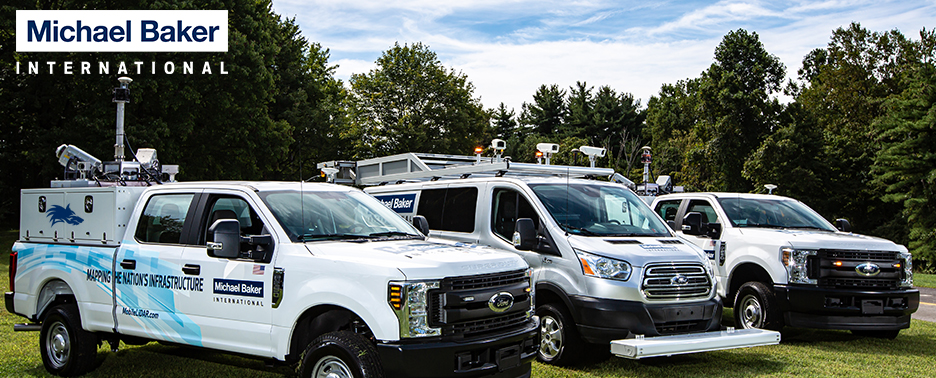Background
Continuing with our series on Baker's Mobile LiDAR system (See Part 1), we introduce you to the lasers and cameras. We will discuss the basic overview and specifications of the sensors. After all, the information captured with these four sensors is what you really want to see and utilize.
The images below depict an image captured with one of the onboard cameras and a colorized point cloud derived from the laser data and the picture (See our Bedford Springs post)
Lasers
Frequency & Returns
Our vehicle utilizes two Optech lasers - their LYNX Mobile Mapper™ system. The system allows us to collect at different rates (50kHz, 100 kHz or 200kHz) depending upon specific project requirements.
Building upon the technology developed for aerial systems and the need to penetrate tree canopies, the system is also capable of measuring multiple returns of the laser (up to 4). This ability allows for the capture of information behind hedges and through other brush. From the multiple returns, we're able to derive more complete "bare earth" elevation models.
Accuracy & Precision
Basically, precision is a measure of repeatability of a measurement. The lasers have a defined precision of 7 mm. Surveying total stations, by comparison, vary from 2 to 7mm depending on manufacturer, type and target (reflectorless total stations are generally less precise when used as such).
Often times, that term "accuracy" is thrown around indiscriminately, misinterpreted, misrepresented and, quite truthfully, over exaggerated. There are a number of ways to measure accuracy and a number of processes that either improve or reduce accuracy. In the most basic sense, we are realizing raw accuracies from the system itself of between 3 and 8 cm. Using ground control and point cloud constraint measures, we are realizing accuracies in the neighborhood of 1.5 - 4 cm. *There are a number of dependencies and each project is designed and performed to specifications to meet accuracy requirements.
Accuracy will be greatly expanded upon in a future blog. We will review what dilutes accuracy, what procedures we employ and how we establish ground control.
Safety
The light produced by the lasers is not visible and is eye safe at nadir. Therefore, drivers in surrounding vehicles and bystanders are safe from injury by the laser and distraction.
Cameras
We have two 5 mega-pixel cameras on our platform. They can measure up to 3 frames per second depending, again, on project specifications and requirements. We can position them forward or behind the lasers. They are also mounted in brackets that allow for a full range of orientation. If interested in a sign inventory, the passenger side camera may be positioned forward of the laser facing in the direction of travel while the driver side camera may be positioned behind the laser facing backward. For assessing pavement, the cameras would be located in the rear and pointing down.
From the images, we're able to develop a range of products from colorized point clouds to movies and attributes.
The rapid reconfiguration of the sensors (both laser and cameras) allows our operators to tailor a collection to a specific set of goals and products.












